Freshwater Turtles Farm
Freshwater turtles are found in the tropical and sub-tropical latitudes, live their lives on land, and are adapted to environments ranging from harsh, desserts environments to lush tropical forests. Some turtles have strong shells which enough to hold up against the snap of a jungle cougar’s bite. Turtles do not seem to have a personality like a pet. They have shown him to be much smarter animals than many would believe. The power of their memory when he removed their outdoor shelter and several months later returned the turtles to their enclosed yard. They know the hand that feeds them too. The Turtle Farm and Theme Park included the following projects:
Freshwater Turtles Breeding Farm; Three lined box Turtle (Official name is CUORA TRIFASCIATA) breeding and related experimental projects;Turtles Theme Park and Education Center
Freshwater Turtles Breeding Farm
The farm will carry out breeding projects for various types of freshwater turtles. Most of the turtle types are of high value in producing medicine and health products. The growing period is different for each and every type of turtles. Generally, it will be one year to five years based on their own value. The breeding is starting from the importation of baby turtle to the full growth at the farm.
Three lined box Turtle Breeding and related experimental projects
There are a variety of Asian Box Turtles which are sometimes sold as pets. Most turtles that are called "Asian box turtles" are of the genus Cuora. (Two are listed under the genus Cistoclemmys by some writers.) It's important to know which one you have as they require different care. Asian box turtle (One additional species of box turtle, from a different genus-- Pyxidea mouhotii-- can also be called an "Asian box turtle." Wild caught and captive bred Pyxidea are occasionally sold in the pet trade, so general care will be covered in this overview.) Taxonomy: class Reptilia, order chelonia, family emydidae, subfamily batagurinae, genera: Cuora, Cistoclemmys, Pyxidea Cuora trifasciata --Three-striped box turtle: Brown shell with three black or dark brown stripes. Adults have a blunt vertebral keel and small lateral keels. There is a black-bordered olive-colored stripe which runs from the nose down the side of the head and neck, and a yellow stripe runs down the neck from the mouth. It lives in clear mountain streams and other temperate or alpine semi-aquatic situations. More aquatic than the two species above, the three-striped boxed will appreciate a pool area large enough for wading and maybe some swimming. They often prefer to eat earthworms, feeder fish, etc. in the water. A basking light should be provided and enough land area to walk around. This species is quite rare in the wild, but is being captive bred in the US and elsewhere. Other names: Three-banded box turtle, Three-lined box turtle, Chinese three-striped box turtle. Cuora trifasciata AKA: Three-striped box turtle Chinese three-striped box turtle Three-lined box turtle Three banded box turtle Golden Coin Turtle Class Reptilia, order Chelonia, family emydidae, subfamily batagurinae, genus Cuora, species trifasciata. There are currently no described subspecies. Range and natural habitat: The three-striped box turtle has a fairly small range through northern Vietnam several south China provinces and Hainan Island, China. It lives in clear mountain streams and other sub-tropical to temperate, aquatic situations. Cuora trifasciata is one of the most colorful Cuora species. The carapace is brown with three distinct black stripes. The two lateral stripes are shorter than the center stripe. Stripes are positioned on the blunt center keel and the shorter, smaller lateral keels. The plastron is almost entirely black except for a partial border of yellow. The underside of the marginal is pinkish-orange with some small dark blotches. The narrow and pointed head sports several colors. The top of the head is yellow, green or olive. There is a thick black stripe which extends back from the nose. It borders a yellow, green or olive oval spot on each side of the head. The slightly hooked upper jaw is yellow and a yellow stripe extends back from the mouth. The lower jaw is also yellow, but the underside of the neck is pink or orange. The limb sockets and underside of the limbs are also pinkish orange, while the upper sides of the limbs are brown, gray or olive green. The carapace is longer and flatter than many other Cuora species. Although the plastron is hinged, the posterior lobe is too small to provide protection for the hind limbs. There is a fairly large notch at the midline of the anal scutes. The male's plastron is only slightly concave, but the male generally has a longer, thicker tail with the cloaca beyond the carapace margin. Captive care: The three-striped box turtle is semi-aquatic. In the wild it is often seen in clear mountain streams. It enjoys wading and swimming, but also is known to walk about on land. A large vivarium with enough water for swimming should keep your turtle comfortable. It should offer a cool, shaded area and a warm area with a basking light. A full-spectrum light may have physical and psychological benefits for reptiles. Temperatures should range between 68 - 82 degrees F. This turtle will enjoy a large outdoor enclosure with a pond, if possible. It may be housed outdoors year round in subtropical areas. It can survive brief periods of fairly cold weather by becoming dormant. Breeding is more likely to be successful in a large outdoor environment, and occurs with the return of warm weather in the spring. Courtship and mating occur both in and out of the water, and males are quite aggressive. Diet is thought to be almost entirely carnivorous; however, they may also enjoy nibbling on some aquatic plants. They are fond of fish, worms, slugs, insects, crayfish, and baby mice. Occasional meals of canned dog or cat food are also acceptable for this carnivorous animal, and can provide a good medium for a vitamin supplement with calcium.
It is a special type of turtle originates China with a high value for medical and health purpose. The rapid rise of the middle class in Asian countries has meant a sudden explosion in demand for turtle that is being felt worldwide. As to its special characteristic, the feeding, growing and developing must be well maintained by a group of specialists in this field. A grown adult Three lined box turtle weighted about half kilogram.
The Farm will carry out series of experimental projects to evaluate the basis and known medical function. It will develops further to find out whether the characteristic could be use in curing particular illness.
Freshwater Turtles Breeding Farm; Three lined box Turtle (Official name is CUORA TRIFASCIATA) breeding and related experimental projects;
Freshwater Turtles Breeding Farm
The farm will carry out breeding projects for various types of freshwater turtles. Most of the turtle types are of high value in producing medicine and health products. The growing period is different for each and every type of turtles. Generally, it will be one year to five years based on their own value. The breeding is starting from the importation of baby turtle to the full growth at the farm.
Three lined box Turtle Breeding and related experimental projects
There are a variety of Asian Box Turtles which are sometimes sold as pets. Most turtles that are called "Asian box turtles" are of the genus Cuora. (Two are listed under the genus Cistoclemmys by some writers.) It's important to know which one you have as they require different care. Asian box turtle (One additional species of box turtle, from a different genus-- Pyxidea mouhotii-- can also be called an "Asian box turtle." Wild caught and captive bred Pyxidea are occasionally sold in the pet trade, so general care will be covered in this overview.) Taxonomy: class Reptilia, order chelonia, family emydidae, subfamily batagurinae, genera: Cuora, Cistoclemmys, Pyxidea Cuora trifasciata --Three-striped box turtle: Brown shell with three black or dark brown stripes. Adults have a blunt vertebral keel and small lateral keels. There is a black-bordered olive-colored stripe which runs from the nose down the side of the head and neck, and a yellow stripe runs down the neck from the mouth. It lives in clear mountain streams and other temperate or alpine semi-aquatic situations. More aquatic than the two species above, the three-striped boxed will appreciate a pool area large enough for wading and maybe some swimming. They often prefer to eat earthworms, feeder fish, etc. in the water. A basking light should be provided and enough land area to walk around. This species is quite rare in the wild, but is being captive bred in the US and elsewhere. Other names: Three-banded box turtle, Three-lined box turtle, Chinese three-striped box turtle. Cuora trifasciata AKA: Three-striped box turtle Chinese three-striped box turtle Three-lined box turtle Three banded box turtle Golden Coin Turtle Class Reptilia, order Chelonia, family emydidae, subfamily batagurinae, genus Cuora, species trifasciata. There are currently no described subspecies. Range and natural habitat: The three-striped box turtle has a fairly small range through northern Vietnam several south China provinces and Hainan Island, China. It lives in clear mountain streams and other sub-tropical to temperate, aquatic situations. Cuora trifasciata is one of the most colorful Cuora species. The carapace is brown with three distinct black stripes. The two lateral stripes are shorter than the center stripe. Stripes are positioned on the blunt center keel and the shorter, smaller lateral keels. The plastron is almost entirely black except for a partial border of yellow. The underside of the marginal is pinkish-orange with some small dark blotches. The narrow and pointed head sports several colors. The top of the head is yellow, green or olive. There is a thick black stripe which extends back from the nose. It borders a yellow, green or olive oval spot on each side of the head. The slightly hooked upper jaw is yellow and a yellow stripe extends back from the mouth. The lower jaw is also yellow, but the underside of the neck is pink or orange. The limb sockets and underside of the limbs are also pinkish orange, while the upper sides of the limbs are brown, gray or olive green. The carapace is longer and flatter than many other Cuora species. Although the plastron is hinged, the posterior lobe is too small to provide protection for the hind limbs. There is a fairly large notch at the midline of the anal scutes. The male's plastron is only slightly concave, but the male generally has a longer, thicker tail with the cloaca beyond the carapace margin. Captive care: The three-striped box turtle is semi-aquatic. In the wild it is often seen in clear mountain streams. It enjoys wading and swimming, but also is known to walk about on land. A large vivarium with enough water for swimming should keep your turtle comfortable. It should offer a cool, shaded area and a warm area with a basking light. A full-spectrum light may have physical and psychological benefits for reptiles. Temperatures should range between 68 - 82 degrees F. This turtle will enjoy a large outdoor enclosure with a pond, if possible. It may be housed outdoors year round in subtropical areas. It can survive brief periods of fairly cold weather by becoming dormant. Breeding is more likely to be successful in a large outdoor environment, and occurs with the return of warm weather in the spring. Courtship and mating occur both in and out of the water, and males are quite aggressive. Diet is thought to be almost entirely carnivorous; however, they may also enjoy nibbling on some aquatic plants. They are fond of fish, worms, slugs, insects, crayfish, and baby mice. Occasional meals of canned dog or cat food are also acceptable for this carnivorous animal, and can provide a good medium for a vitamin supplement with calcium.
It is a special type of turtle originates China with a high value for medical and health purpose. The rapid rise of the middle class in Asian countries has meant a sudden explosion in demand for turtle that is being felt worldwide. As to its special characteristic, the feeding, growing and developing must be well maintained by a group of specialists in this field. A grown adult Three lined box turtle weighted about half kilogram.
The Farm will carry out series of experimental projects to evaluate the basis and known medical function. It will develops further to find out whether the characteristic could be use in curing particular illness.





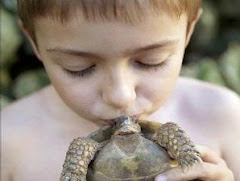





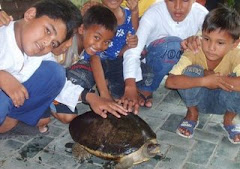













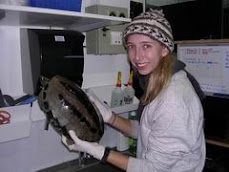



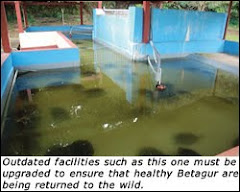.jpg)



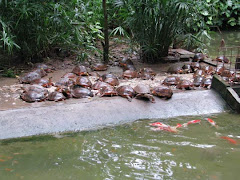

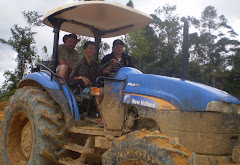
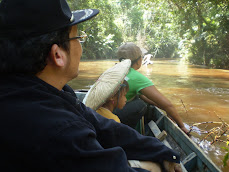
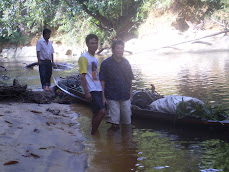













Tidak ada komentar:
Posting Komentar